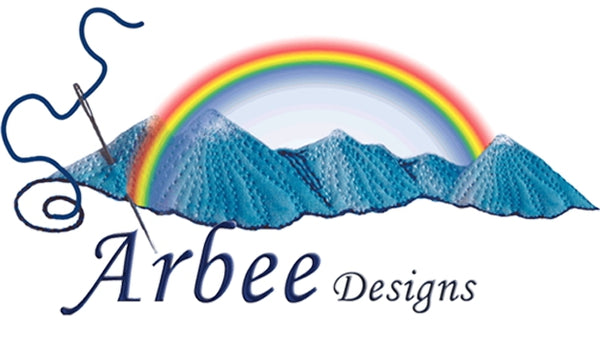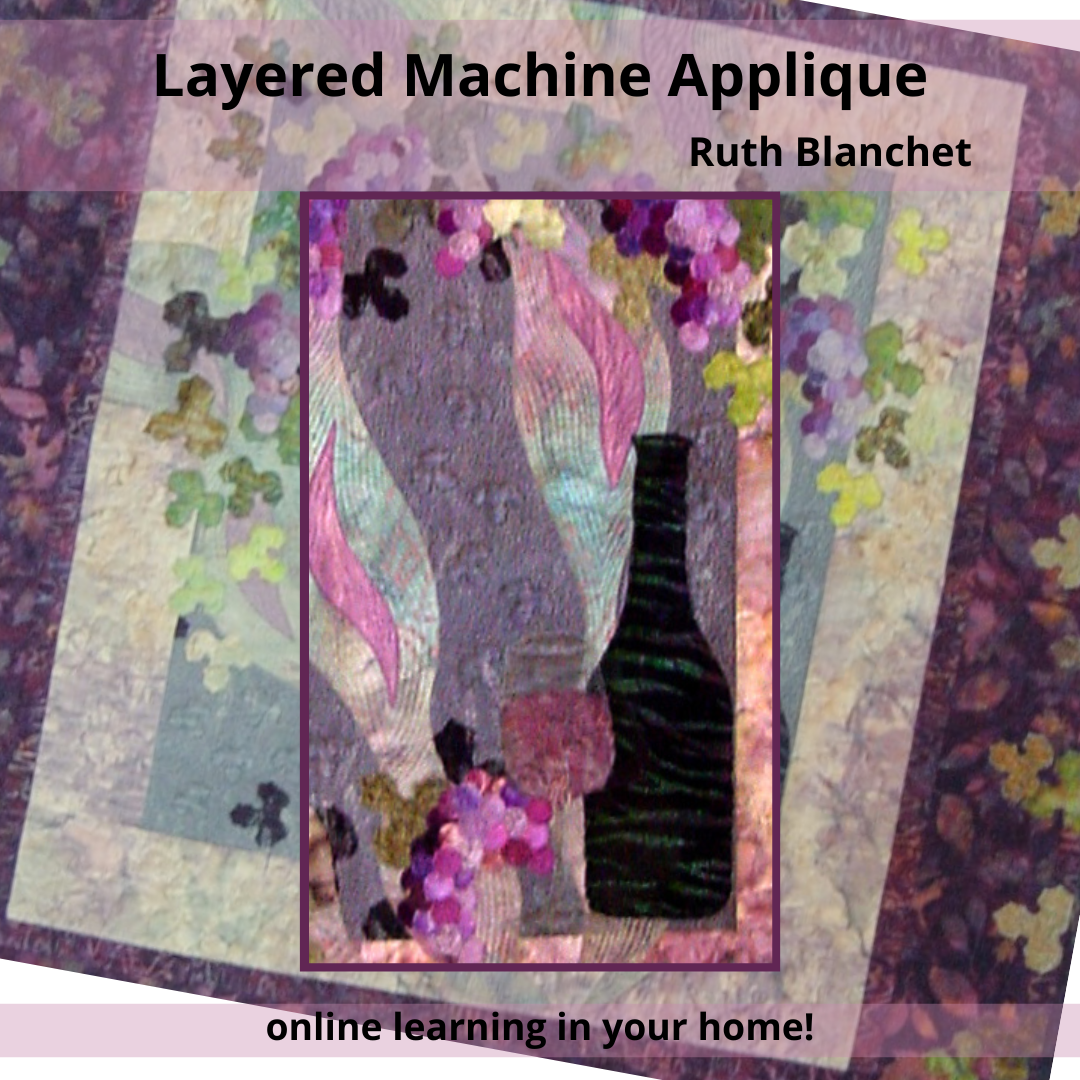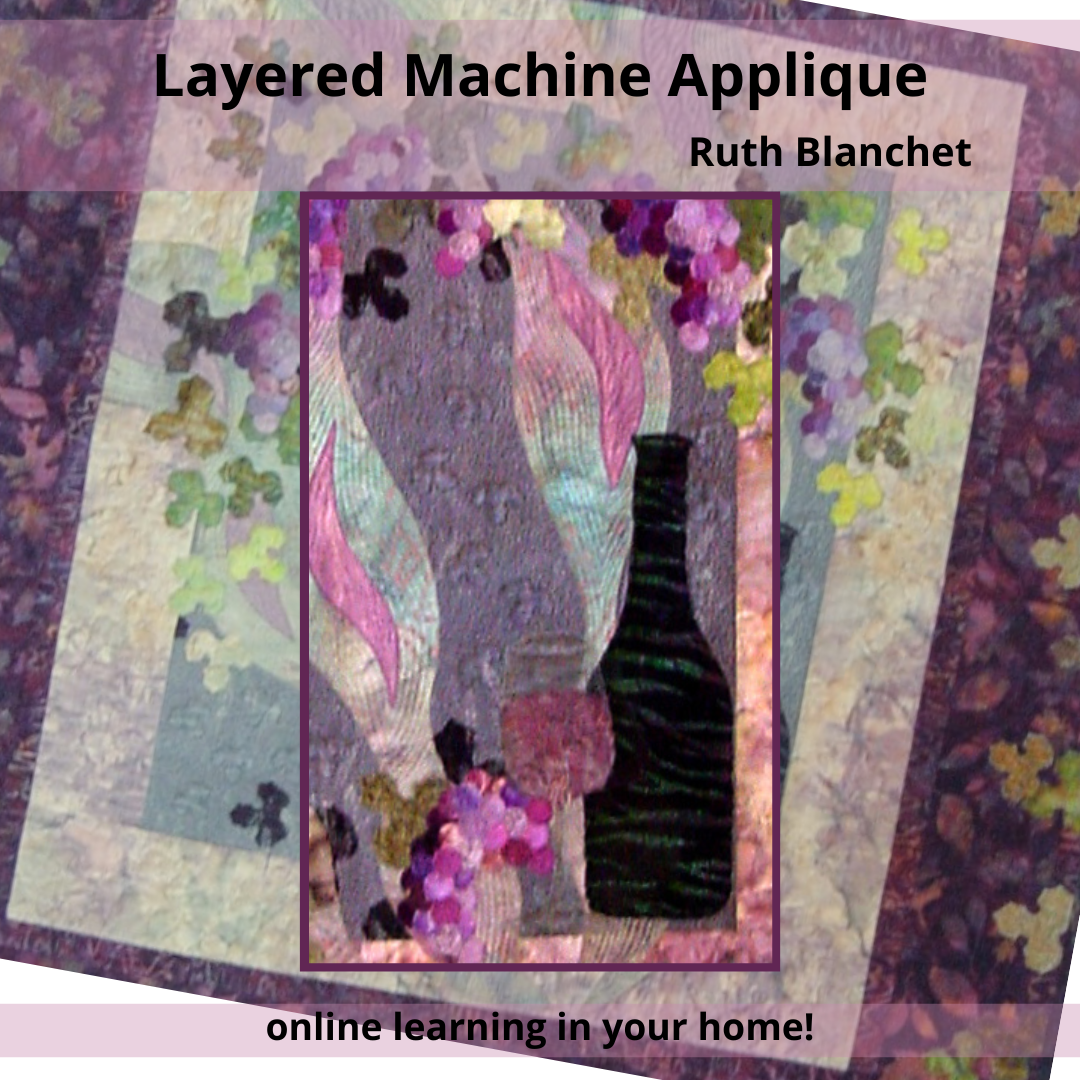- Description
- Requirements
Explore a captivating and innovative approach to quilt making that plays with perspective and shading through the clever use of sheer fabrics and intricate cut work. This class offers plenty of room for customization, as Ruth encourages you to unleash your creativity and design a unique quilt if you wish, or you can opt to work with the templates provided. You'll have the opportunity to craft an original background while mastering the techniques involved in this exciting process.
Note: Once purchased, you can access the class data any time, 24 hours a day and you get immediate access. (if you don't have an account we suggest you sign up for one prior to purchase)
Class is based on Ruth's quilt Red Red Wine - 32" x 38"
Fabrics
Main Background - ONE 22 1/2" x 27 1/2" rectangle (dark)
First Border - FOUR 4 1/2" strips full width of fabric (light)
Second Border - FOUR 7" wide strips full width of fabric (dark)
Background appliqué 1- ONE 19" x 36" rectangle (light)
metallic cotton or lamé work well here. Cotton may also be used (main appliqué
section)
Background appliqué 2 - scraps of medium value (approximately a fat eighth of one
fabric or a combination of fabrics)
Sheer Fabric - ONE 38" x 34" rectangle
Bottle - ONE 16" x 6" rectangle – sheer fabric is ideal but not essential
Glass - ONE 10" x 5" rectangle – sheer fabric is ideal and must be used if you wish
wine to show
Wine - ONE 4" x 5" rectangle (optional)
Grapes - An assortment of scraps in grape-coloured fabrics for appliqué. You want a
selection of shades ranging from light to very dark
Leaves - An assortment of green scraps at least 2 1/2" square (if you have a limited
supply in your stash, I suggest purchasing a multi-coloured fabric with various
shades. Hand dyed fabrics are great)
1/2 yard double sided fusible webbing such as Steam a Seam (1 yard wide). Use webbing that can be easily stitched through.
Backing - 44" x 50" backing fabric
Batting - 44" x 50" of cotton or cotton blend batting, plus 2-3 10" squares (see below***)
Non-woven interfacing - 44" x 50" iron-on heavy duty interfacing, plus two or three 10" squares (see below***) Not stiff enough that it stands erect on its own, soft enough that it can be crumpled yet still firm enough to prevent puckering from heavy stitching. Could also be called machine embroiders stabilizer. Craft Fuse 808 by Pellon is ideal. This would more likely be found with general sewing supplies, rather than in a quilt shop.
Sandwich top fabric 2-3 10" squares (see below***)
***At least two sandwich samples are required for practice. To make these, press a square of interfacing to one side of a square of batting and pin a fabric square to the other side of the batting. Stitch around the outside and remove pins. The interfacing is the backside of the sandwich.
Other Supplies
Sewing machine and accessories, including 1/4" foot and darning foot
(other methods of stitching 1/4" seam are fine and a spring needle may replace the
darning foot). Sewing machine manual maybe useful
- pencil and fabric markers (fabric chalk could be useful)
- rulers, rotary cutter and mat. Large square ruler would be useful
- scissors
- safety pins
- fine pins (bridal and lace pins are ideal)
- nylon invisible thread or fine thread to match sheer fabric
- pre-wound bobbin filled with bobbin thread, Metrolene looper thread or 2-ply thread for bobbin. You can also use The Bottom Line thread by Superior
- 19" x 36" sheet of paper or newsprint (optional)
- template plastic (optional)
- topstitching needle would be useful, especially if you have any bother with nylon thread, this may reduce the problem. It is also recommended if using rayon and other embroidery threads.
- Baking Paper, Teflon Sheet or Parchment Paper. Note: Baking Paper is used with the double-sided bonding much the same as a Teflon sheet. Parchment paper is a similar US product; however, the bonding does not stick to it in the same way, but can be used if neither of the other products are available


